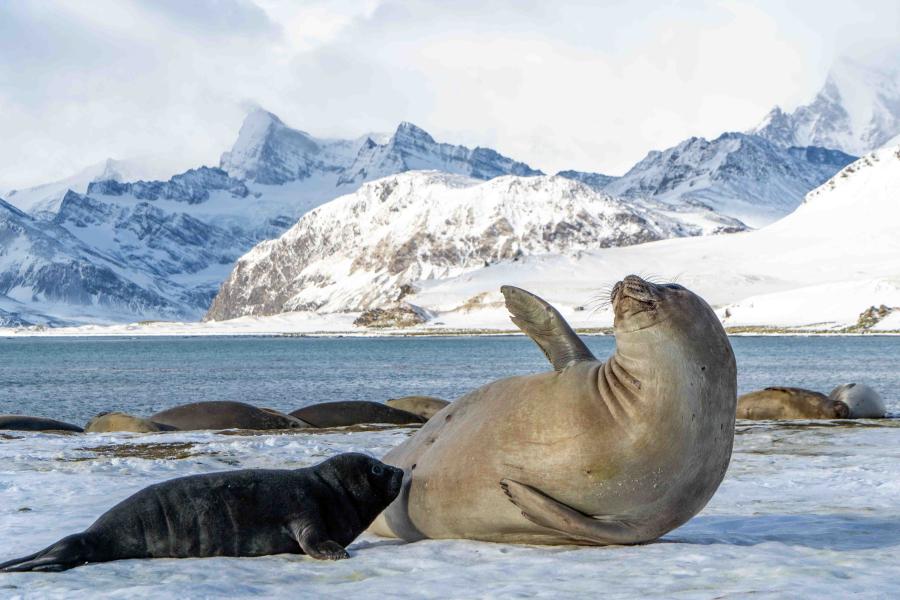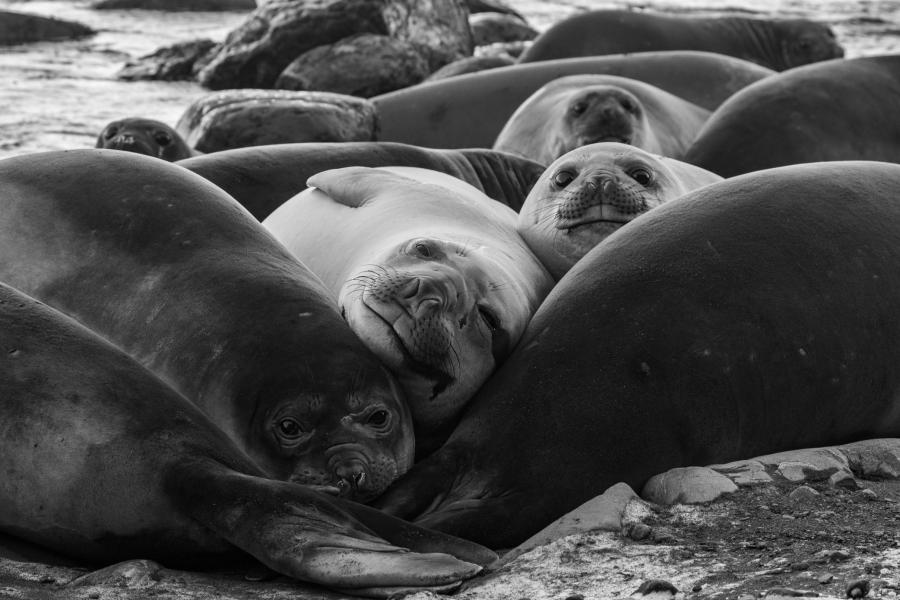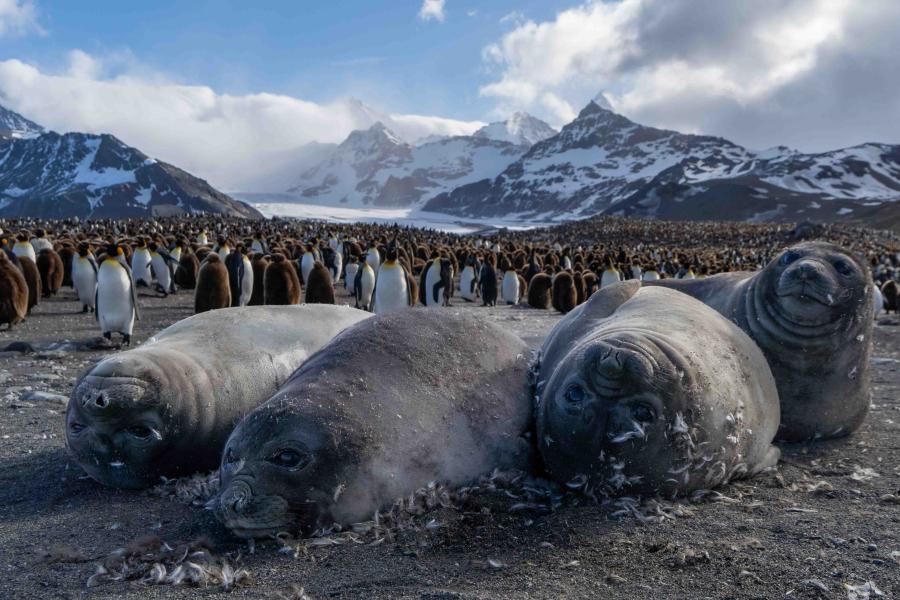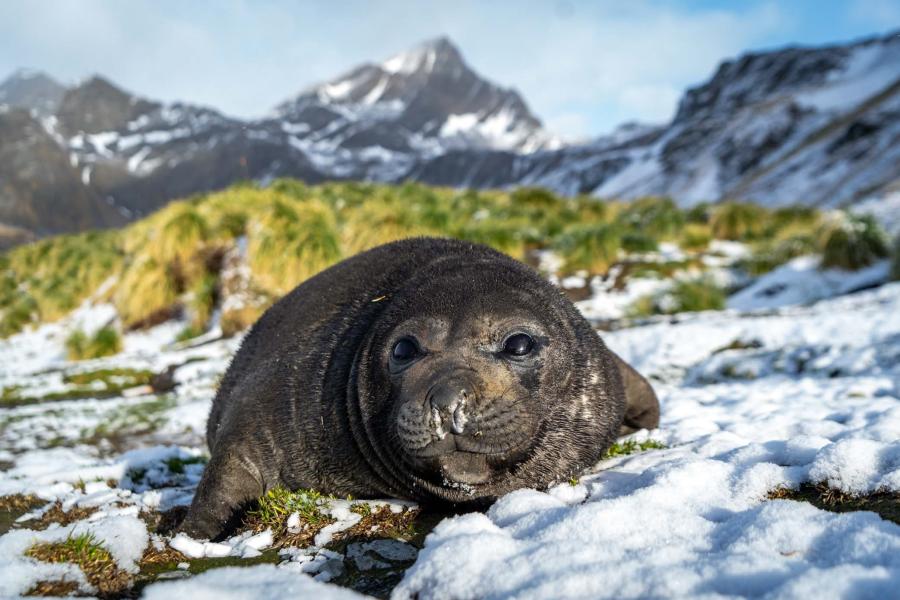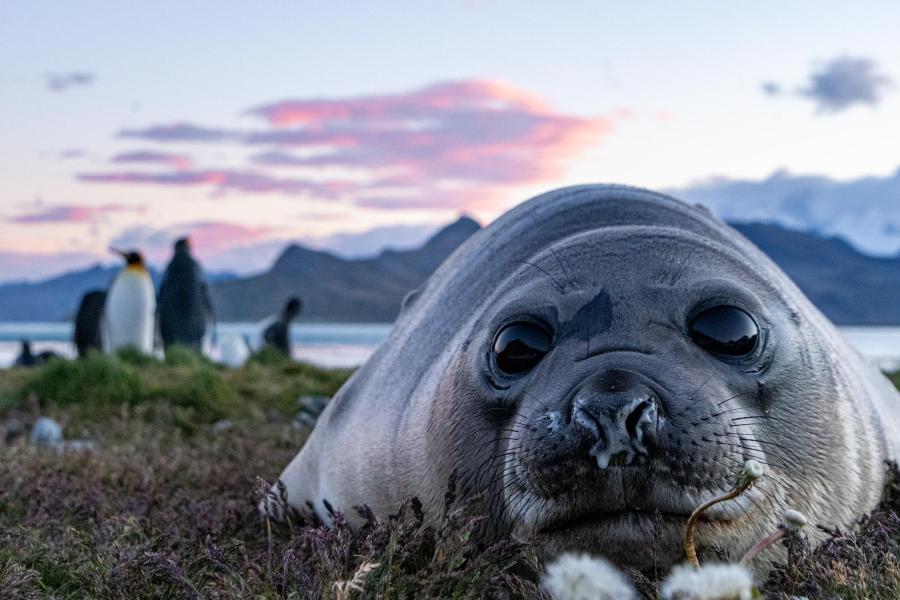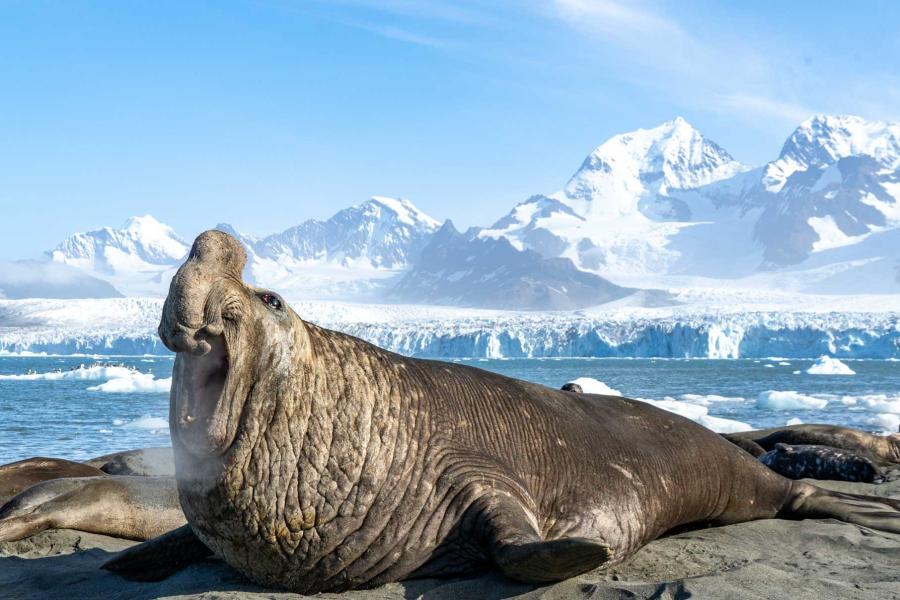New research reveals severe impact of avian flu on southern elephant seals
New research reveals 47% decline in breeding female elephant seals at sub-Antarctic island of South Georgia following a devastating avian influenza outbreak.
A team of scientists from the British Antarctic Survey (BAS), including Dr Phil Hollyman from Bangor University, have documented the severe impact of avian influenza (HPAI) on southern elephant seals at South Georgia.
The research, published in the journal Communications Biology, shows that the world’s largest population of southern elephant seals – which accounts for over half of the global population of breeding age – has suffered unprecedented losses following the arrival of the HPAI H5N1 strain of avian influenza at the remote sub-Antarctic island in late 2023.
Using cutting-edge aerial survey technology, the research team monitored the three largest breeding colonies on South Georgia (representing 16% of the total female breeding population, based on census data from 1995), comparing breeding female numbers before and after the virus outbreak.
Their findings reveal an average reduction of 47% in females between 2022 and 2024, with some colonies experiencing declines of over 60%.
Dr Phil Hollyman Lecturer in Global Marine Fisheries at Bangor University’s School of Ocean Sciences said, “It is heartbreaking to report such severe declines in the world’s largest breeding population of Southern Elephant seals. They are the world’s largest seal species and an iconic fixture of the beaches at South Georgia. Whether HPAI has resulted in direct mortality or shifts in behaviour, this population drop is extremely concerning. Continued monitoring efforts are needed to fully understand the long-term impact.
“When we undertook the early data collection included in this paper, we were simply trying to estimate the size of key colonies around the island. We were lucky that these counts were made shortly before the devastating impact of HPAI became clear, as they gave us a hugely valuable set of recent data points. It really underscores the value of long-term monitoring efforts.”
Dr Connor Bamford, seal ecologist and lead author from BAS, said: “The scale of this decline is truly shocking. In typical years, we might see variations of around 3-7% between years, but to see nearly half of the breeding population absent is unprecedented. This represents approximately 53,000 missing females across the entire South Georgia population.
“What makes this particularly concerning is that southern elephant seals are long-lived animals. Even short-term drops in reproductive output or mortality in the breeding population will have long-term impacts on population stability. The ramifications of this outbreak will likely be felt for many years to come.”
Southern elephant seals are one of the most iconic species in Antarctica, with adults capable of diving to depths of over 1,500 metres and travelling thousands of kilometres to feed, across the entire Southern Ocean. The remote islands of South Georgia have been home to a stable population for decades.
The virus first appeared at South Georgia in September 2023, initially detected in brown skuas before spreading to marine mammals including elephant seals and Antarctic fur seals.
The research team used fixed-wing UAVs to conduct precise aerial surveys, creating detailed maps of the breeding colonies and enabling accurate counts of individual seals. This technology allowed scientists to assess the impact of HPAI with unprecedented precision despite the remote and challenging conditions.
The findings mirror drastic declines observed in South American elephant seal populations, where HPAI caused mortality rates of over 70% in some areas. However, the South Georgia population had previously been considered stable and isolated from such threats.
The research highlights the critical importance of continuing the sustained, long-term monitoring led by British Antarctic Survey since 2015, which has integrated ground counts, drone surveys and satellite imagery to assess the full extent of the damage and track potential recovery. These baseline data enable researchers to distinguish short-term fluctuations from enduring population-level impacts.
The study was funded by two Biodiversity Challenge Fund Darwin Plus grants (DPLUS109 & DPLUS214) and conducted under permits from the Government of South Georgia and the South Sandwich Islands.
Elephant seals
